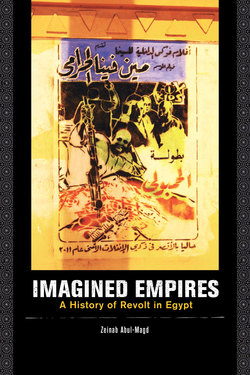Читать книгу Imagined Empires - Zeinab Abul-Magd - Страница 7
На сайте Литреса книга снята с продажи.
ОглавлениеACKNOWLEDGMENTS
This book was supported by my graduate work in Georgetown University’s History Department and by grants from Georgetown’s Graduate School and Oberlin College. Its production would not have been possible without the invaluable and precious support of many colleagues and friends in the United States and Egypt. First of all, the greatest thanks are due to Judith Tucker, my former advisor at Georgetown University. Late Faruk Tabak of Georgetown thoughtfully helped with earlier stages of writing the manuscript. Many thanks are due to Timothy Mitchell, Khaled Fahmy, and Peter Gran, who were very generous with their time and ideas in discussing earlier versions of the book. Many graduate colleagues have been of indispensable help throughout the years of researching and writing, especially Dina Khalifa, Dina Shehata, Nadya Sabiti, Sara Scalenghe, Mohamed Said Ezz El-Din, Aurelie Perrier, and many others at Georgetown’s Center for Contemporary Arab Studies.
I would also like to thank all the great historians and researchers at the National Archives of Egypt whom I met and had fruitful discussions with, especially Emad Hilal, Magdi Guirguis, Nelly Hanna, Gennifer Derr, Shana Minkin, Alan Mikhail, Lisa Pollard, and Will Hanley. At Oberlin College, I have found much support from many colleagues, including Frances Hasso and Sam White. Furthermore, I have to advance many thanks to Max Strasser and Avi Asher-Schapiro, my wonderful students who copyedited the manuscript. Finally, in Upper Egypt, the dear region about which this book was written, I would like to thank all the revolutionary youth of the south and my parents.
FIGURE 1. Nineteenth-century map of Egypt that shows Qina Province (Keneh) located in the south/Upper Egypt (see arrow).
